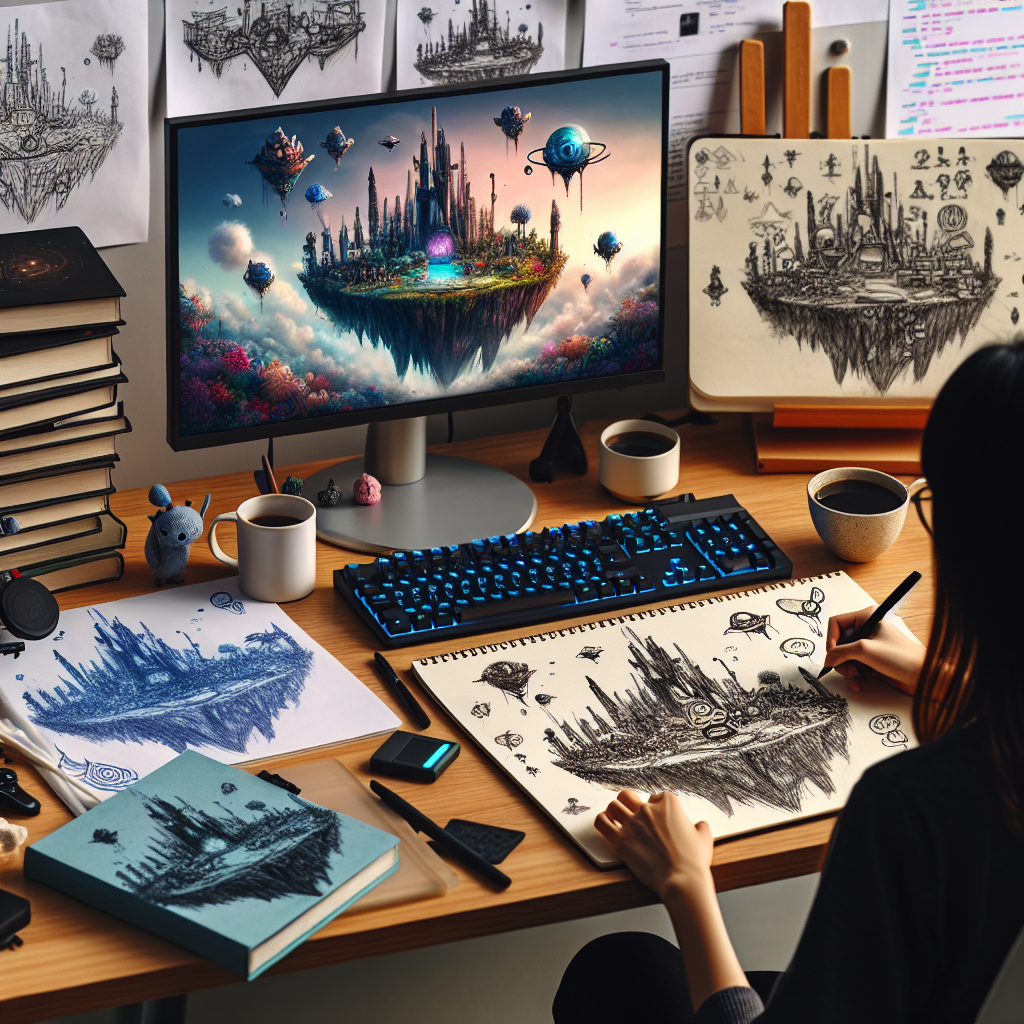From Concept to Creation: Essential Tips for Indie Game Development
The world of indie game development is a vibrant and dynamic landscape that allows creative minds to transform their visions into playable experiences. With the rise of accessible game development tools and platforms, aspiring developers now have unprecedented opportunities to bring their ideas to life. However, the journey from concept to creation can be a challenging one. Here are essential tips to navigate the indie game development process successfully.
1. Start With a Strong Concept
Every great game begins with a compelling concept. Take the time to brainstorm and refine your ideas. Ask yourself questions like:
- What unique gameplay mechanics can I introduce?
- What story do I want to tell?
- How can I evoke emotions through my game design?
Creating a one-page game design document can help crystallize your concept. Outline the core gameplay, themes, target audience, and what sets your game apart from existing titles. This foundational work will guide you as you move into development.
2. Set Realistic Goals
Indie developers often wear many hats—designer, programmer, artist, and marketer. Given the breadth of responsibilities, it’s crucial to set realistic goals and deadlines. Break down your development process into manageable milestones. This approach keeps the project on track and allows you to celebrate small victories along the way.
Remember to be flexible; game development is often unpredictable. Be prepared to adjust your timelines as you encounter unforeseen challenges.
3. Choose the Right Tools
Selecting the right tools is vital for streamlining your development process. Consider the following categories:
- Game Engines: Engines like Unity, Unreal Engine, and Godot offer extensive features to create 2D and 3D games. Choose one that aligns with your technical skills and project requirements.
- Art Assets: Use graphic design tools like Adobe Photoshop, Blender, or Aseprite to create or modify your art assets. Alternatively, consider asset marketplaces to find high-quality assets that fit your game’s aesthetic.
- Sound Design: Use digital audio workstations (DAWs) like Audacity or FL Studio to create music and sound effects. If sound design isn’t your strength, platforms like Freesound provide royalty-free audio resources.
4. Focus on Gameplay First
While visuals and narrative are important, gameplay should always take precedence. Create a prototype early in the development phase to test your core mechanics. This allows you to iterate quickly, gathering feedback from players and making necessary adjustments before fully committing to your artistic direction.
Using playtesting sessions—even with small groups of friends or family—can help you understand how players interact with your game and what improvements can be made.
5. Build a Community
Engaging with a community of fellow developers and players can be instrumental in the success of your indie game. Platforms like Reddit, Discord, or specialized forums allow you to share your progress, receive feedback, and build a network of support.
Social media is also a powerful tool for creating a buzz around your game. Share your development journey, behind-the-scenes content, and engage with potential players, making them feel part of the process.
6. Manage Your Finances Wisely
Financial management is a crucial aspect of indie game development. Establish a budget that covers software, hardware, marketing, and potential outsourcing if needed. Keep track of your expenses and be mindful of your cash flow.
Consider exploring funding options such as crowdfunding platforms (e.g., Kickstarter, Indiegogo), grants, or even partnerships with publishers interested in supporting indie developers.
7. Test, Iterate, and Polish
Testing is an indispensable part of game development, and it’s essential to conduct thorough QA (Quality Assurance) to identify bugs, glitches, and usability issues. Utilize alpha and beta testing phases to gather feedback and make iterative improvements based on player experiences.
Polishing your game can be time-consuming, but it’s essential for creating a refined final product. Pay attention to details like animations, interface design, and overall flow to enhance the player experience.
8. Prepare for Launch
As you approach your release date, shift your focus toward marketing and distribution. Create a marketing plan that defines your target audience and outlines promotional strategies. Consider creating a press kit and reaching out to gaming journalists and influencers who might be interested in covering your game.
Choose the right distribution platforms to release your game. Steam, itch.io, and the Epic Games Store are popular choices for indie developers, and they each offer unique opportunities to reach your audience.
9. Post-Launch Support
The journey doesn’t end after your game is launched. Stay engaged with your community, listen to player feedback, and provide updates or patches as needed. Consider preparing additional content, such as downloadable content (DLC) or mod support, to keep players engaged long after the initial release.
Conclusion
Indie game development is a fulfilling yet challenging endeavor that requires creativity, dedication, and resilience. By following these essential tips, you can navigate the often-complex landscape of game creation effectively. Embrace the learning process, stay passionate about your project, and most importantly, have fun while creating the game of your dreams. The indie gaming community is waiting to welcome you to its ranks with open arms!




